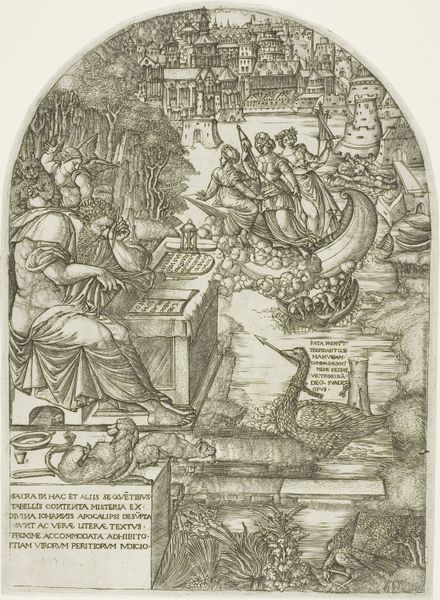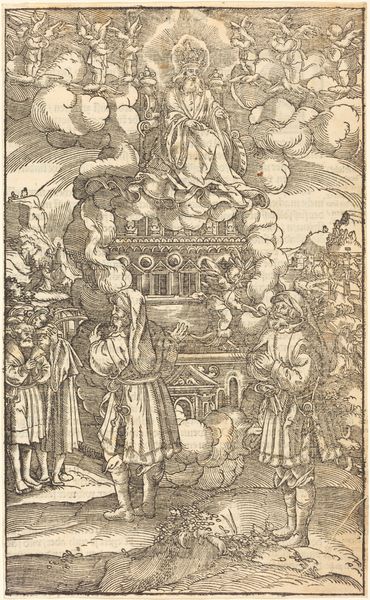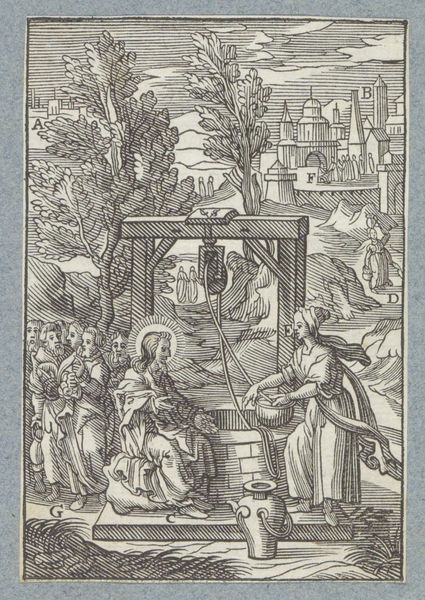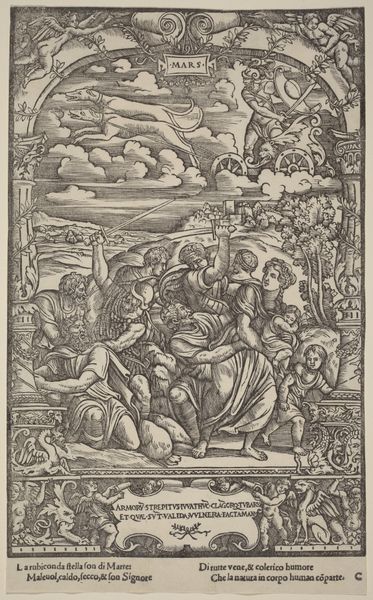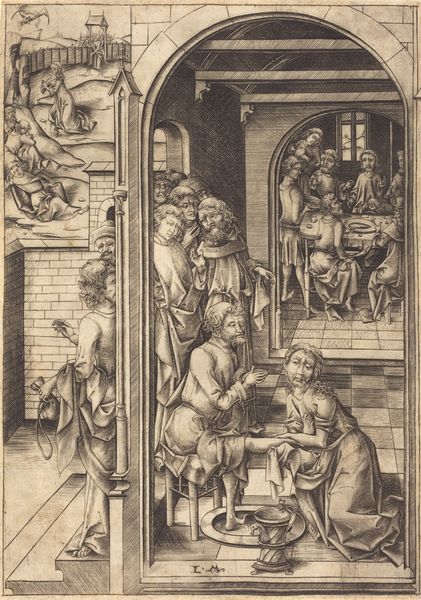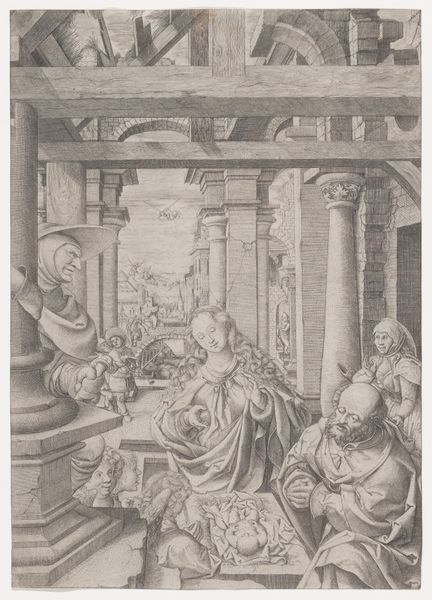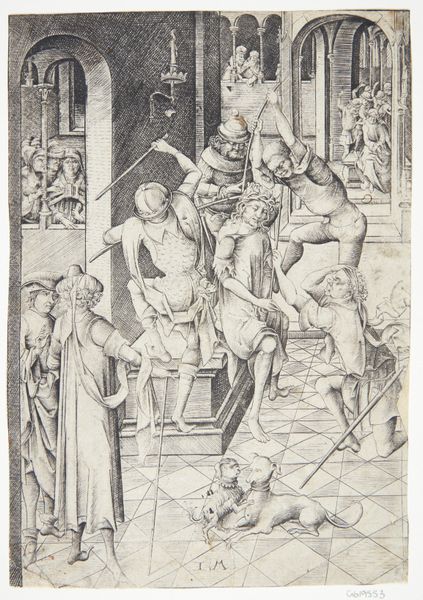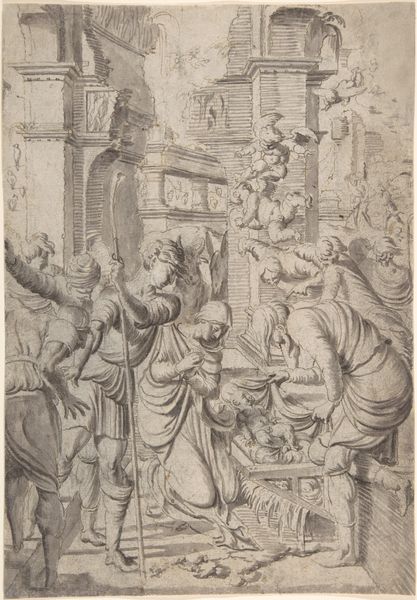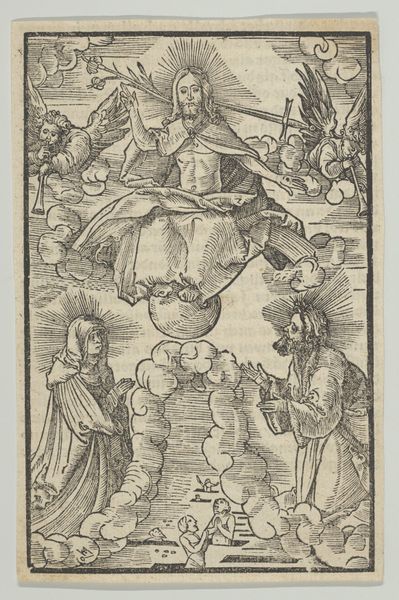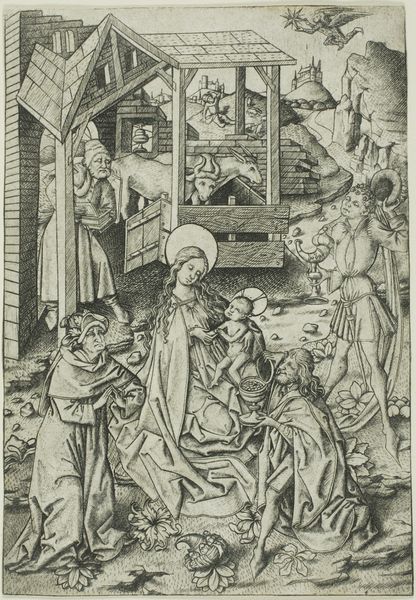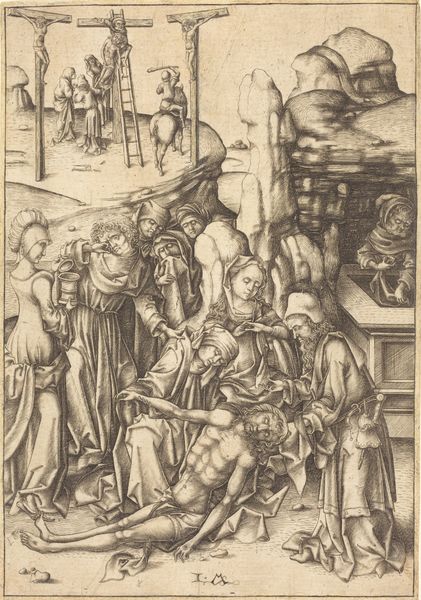
drawing, print, paper, engraving
#
drawing
#
medieval
#
germany
# print
#
figuration
#
paper
#
11_renaissance
#
line
#
history-painting
#
engraving
Dimensions: 206 × 144 mm (image);213 × 148 mm (sheet trimmed within platemark)
Copyright: Public Domain
Curator: Here we have a print titled “The Resurrection,” created by Israhel van Meckenem, likely during the Renaissance. The artwork on paper, achieved with engraving, shows Christ rising from his tomb. What’s your immediate response? Editor: Visually, I’m struck by the chaos and then the figure of Christ emerging. The sharp lines create a dynamic scene – there’s violence in the foreground, with soldiers scattered about, seemingly defeated. But also there’s also a serene sense of hope coming from Christ, bathed in light. Curator: Absolutely. Consider how Meckenem, as a leading printmaker, disseminated such scenes. Engravings made imagery widely accessible. We see the socio-political context of religious doctrine playing out in the artist's detailed lines, reaching a broad audience unlike painting or sculpture. Editor: Yes, the iconography here is fascinating. Christ emerges carrying a cross as a symbol of his victory over death, light emanating from his head, but is this the conventional story? Angels are helping remove the tomb’s slab. And behind him, we even see him again in what must be a depiction of harrowing hell. It creates this layering of narratives within the same frame. What effect was he hoping to have on viewers? Curator: Meckenem was shrewd in recognizing the market for this. His shop was among the largest producers of prints. The composition reflects broader trends, moving away from idealized form as Renaissance style traveled north of the alps. There is more focus here on the expressive depiction, particularly the soldiers’ distorted poses. Editor: Look closely and the guards, are equipped with anachronistic weapons. Even Meckenem's "IM" insignia upon a shield hints, at something beyond pure religious devotion. It could symbolize faith and the maker's commercial presence combined. The print suggests an ongoing reinterpretation of religious history through local or current markers and settings. Curator: You’re right to highlight that interplay. This work, “The Resurrection,” illustrates the role of printed images, in Reformation Europe as the messages were circulated and consumed on a scale unimaginable just a century before. Editor: What I found particularly compelling is tracing the symbolic depth within those lines. It shows just how even within a medium like print, with commercial functions, an artist embedded the capacity to create profound imagery for the ages.
Comments
No comments
Be the first to comment and join the conversation on the ultimate creative platform.



